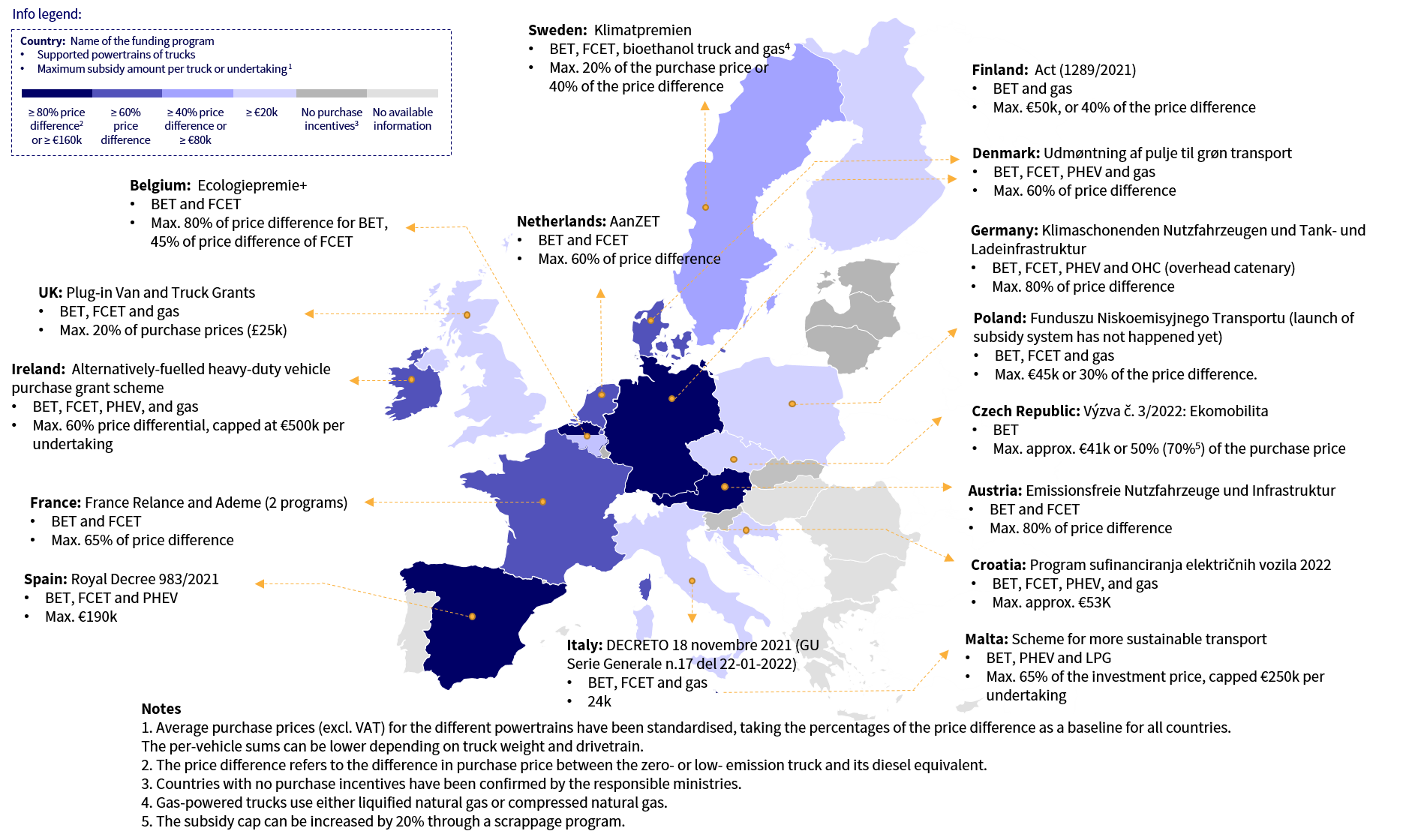To tackle high emission levels from road freight and clean up trucks on European roads, a rapid rollout of zero emission trucks (ZET) is a much needed and effective action. Fully decarbonising the EU’s truck fleet is crucial to reach the climate neutrality target by 2050. They are in high demand amongst first mover hauliers and if European truck makers make good on their public announcements, 44% of new truck sales will be zero emissions by 2030. Some manufacturers even aim to reach 60% ZET sales by then. Thanks to increasing production volumes and low operational costs for battery electric trucks (BETs), total cost of ownership (TCO) parity with diesel trucks is around the corner. Recent studies by environmental organisations, research groups and truck makers indicate long-haul BETs will reach TCO parity before or by the mid 2020s, depending on the country and available policy incentives. However, high upfront vehicle costs for the large number of small and medium sized hauliers in Europe can still pose a barrier in the early years.
Public financial incentives have proven to be an effective catalyst and temporary fix for initially higher vehicle costs of electric cars whilst production volumes are increasing and eventually bringing prices down. They can be the dealbreaker to spur road freight’s zero emission transition, a sector driven by techno-economic considerations. This briefings maps the available support across Europe (see map below) and suggests ways for national governments and the EU to improve their support schemes. Of the 16 national purchase incentives Austria, France, Germany, the Netherlands and Spain are successfully bridging the investment gap between a diesel truck and a ZET by compensating up to 80% of the difference in costs. For the financial support in Denmark, Ireland, Spain, the United Kingdom the per-vehicle compensation is encouraging, but not yet high enough to sufficiently help (especially smaller) hauliers jump over the price hurdle. Bulgaria, Estonia, Latvia, Lithuania, Greece, Hungary, Portugal, Romania, Slovakia and Slovenia do not have nor are planning to put a ZET scheme in place.
Funds for the corresponding heavy-duty charging and refuelling Infrastructure are available in 9 countries, 3 are in the planning process. At EU level the Connecting Europe Facility (CEF) and the AFIF (the EU’s budget for expanding sustainable road infrastructure) offer financial leavers to accelerate the installation of corresponding zero emission infrastructure across Europe.

Whilst in the next few years incentives are needed as a bridging mechanism to finance capital intensive ZETs, the incentive programs should be phased out in the second half of the 2020s once scaling effects have secured affordable vehicles across all ranges.


